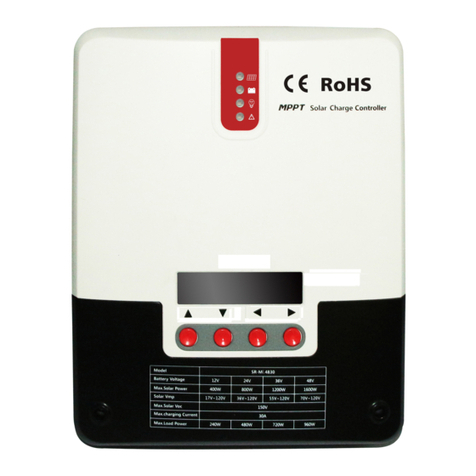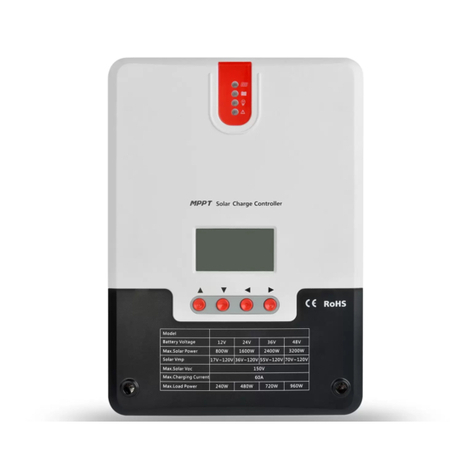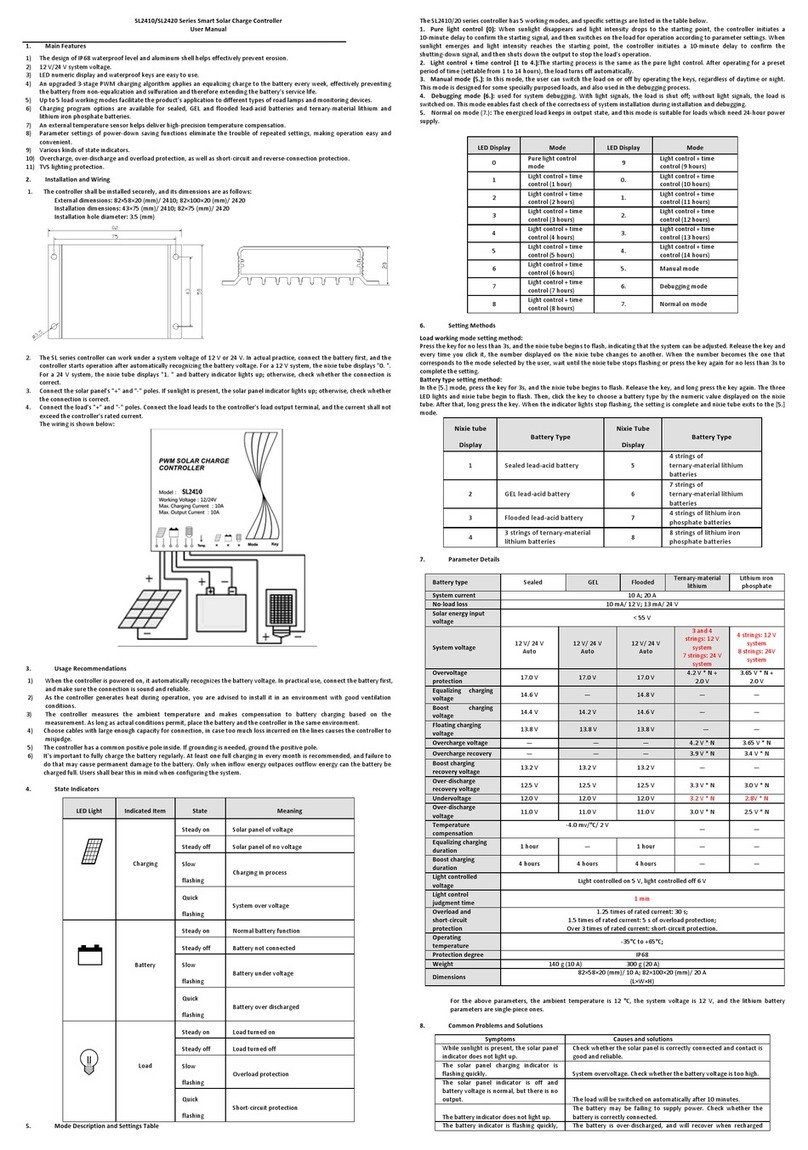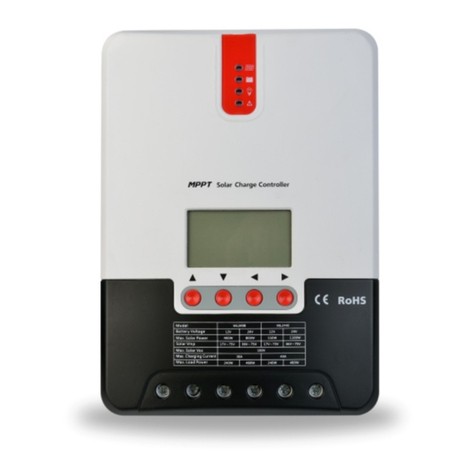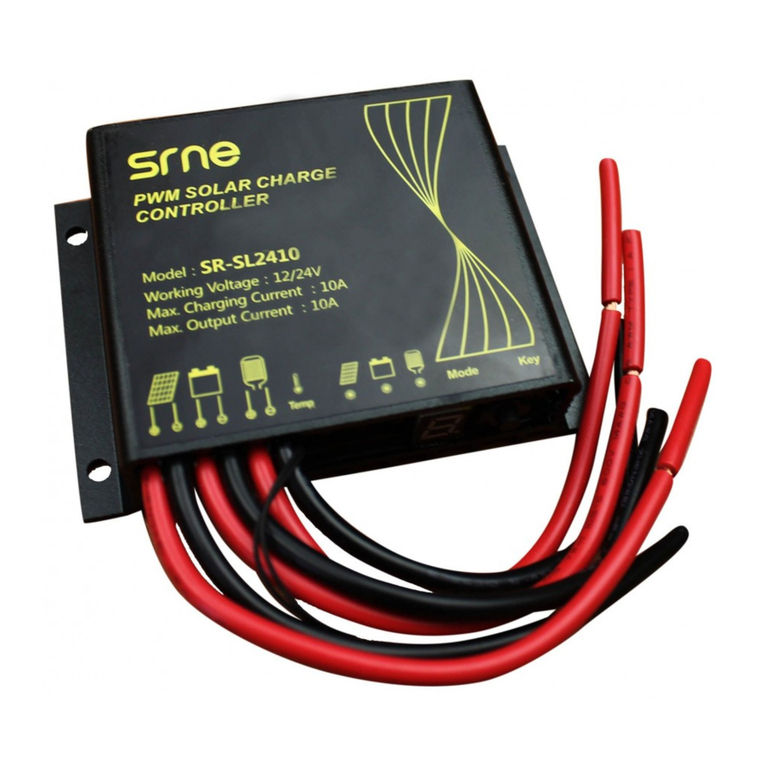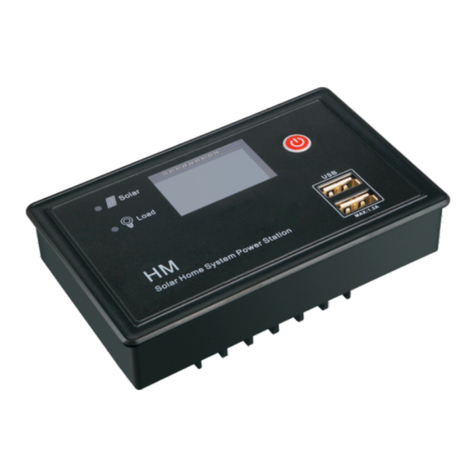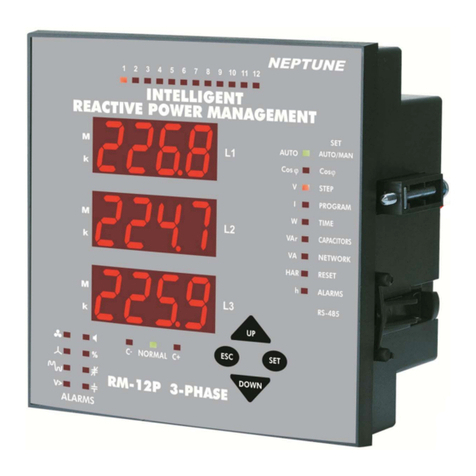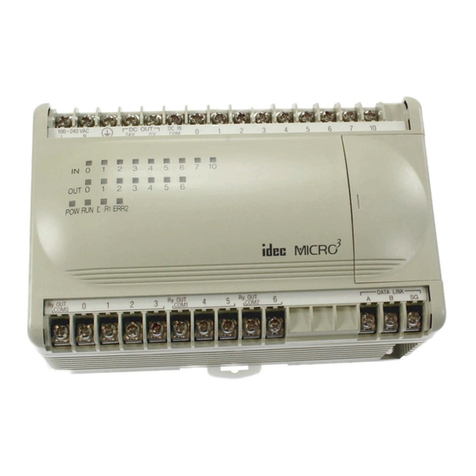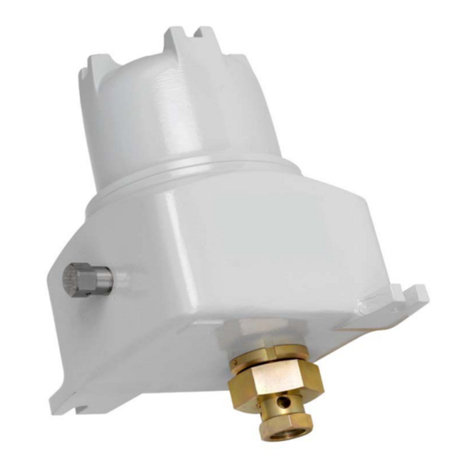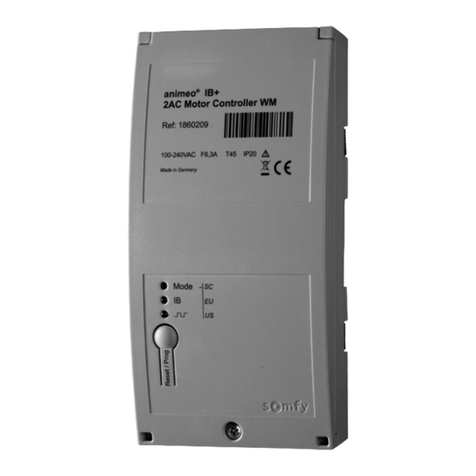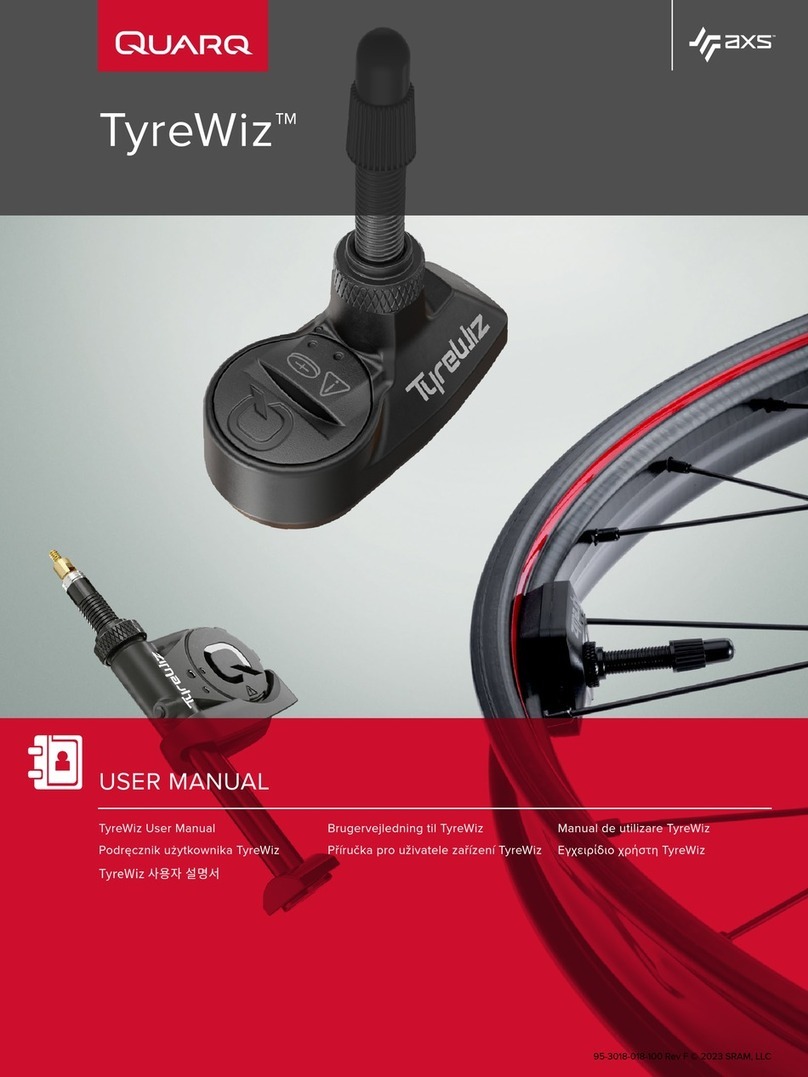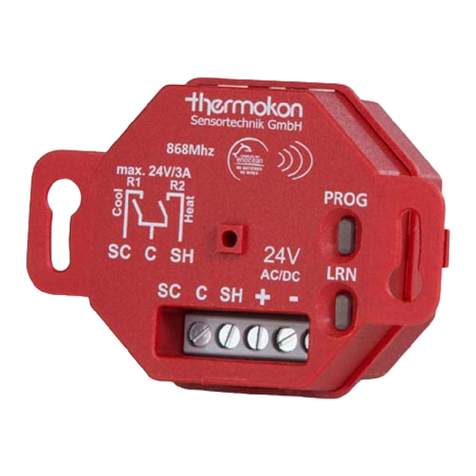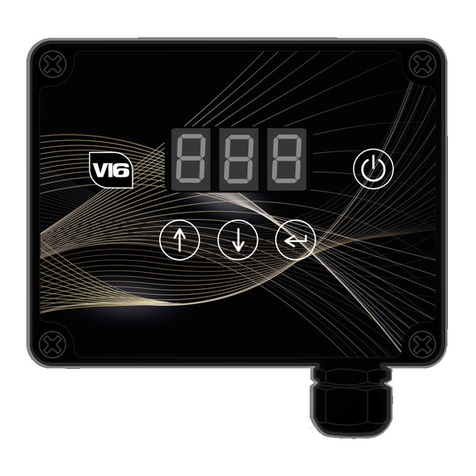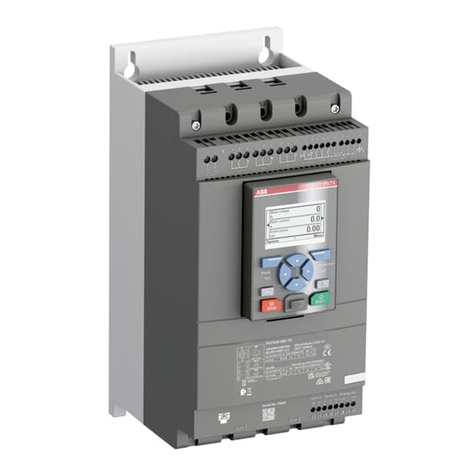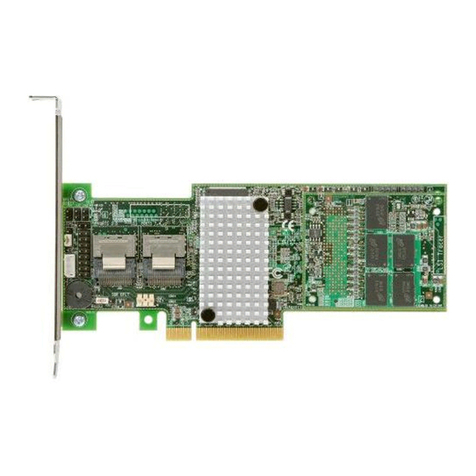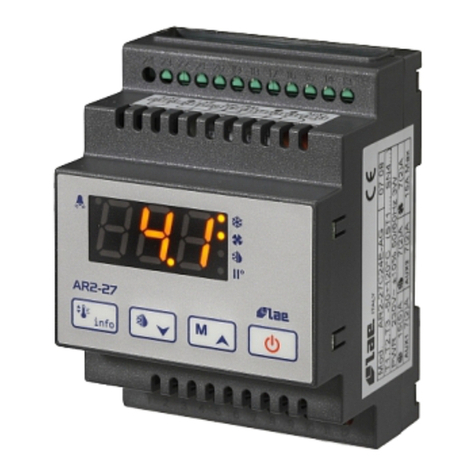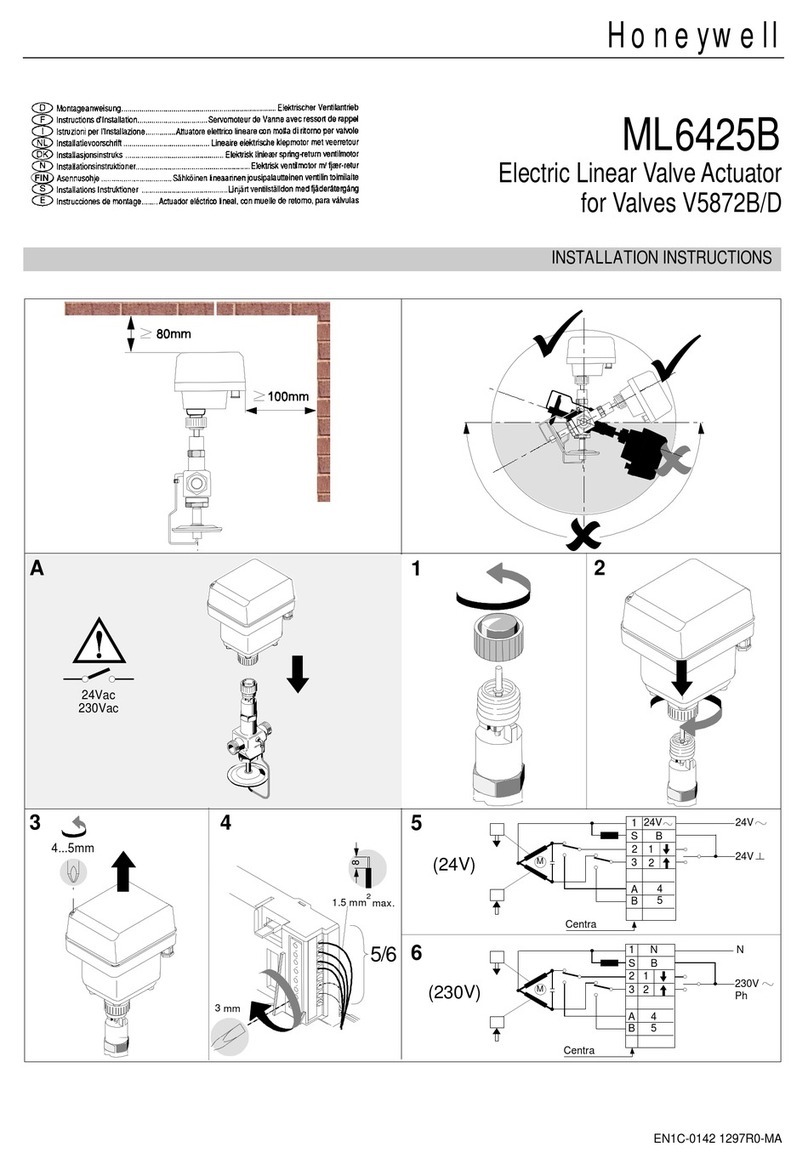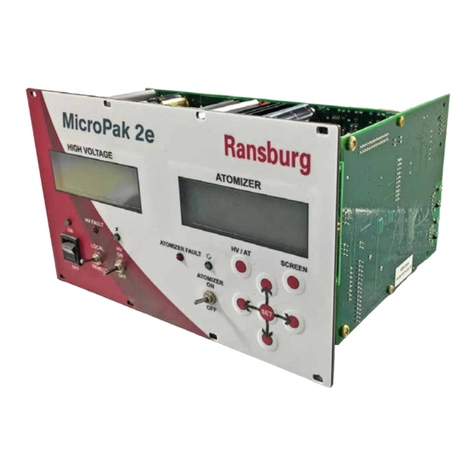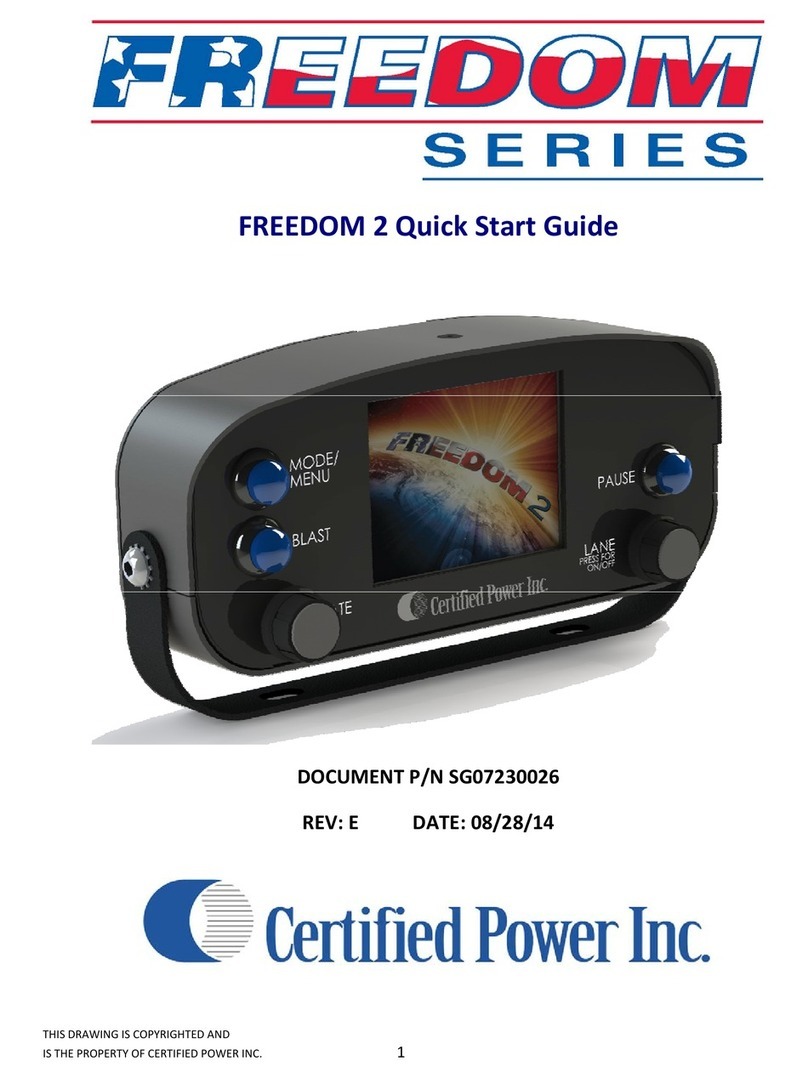Srne ML Series User manual

Version: 1.03 The above information is subject to change without prior notice.
Material Code:102931
Model
Battery Voltage
Max Solar Input Voltage
Charging Current
Discharging Current
ML4830N15
12V/24V/36V/48V
150V
30A
20A
Maximum Power Point
Tracking ML Series
ML4830N15
Solar Charge and Discharge Controller
User Manual
产品尺寸:266*182*81mm
开孔孔位:179*160mm

!
03
03
04
07
21
22
1. Product Introduction
1.1 Product Overview and Features
1.2 Product Features
1.3 Introduction of the Maximum Power Point Tracking Technology
1.4 Introduction of Charging Stages
2. Product Installation
2.1 Installation Precautions
2.2 Wiring Specifications
2.3 Installation and Wiring
3. Product Operation and Display
3.1 LED Indicator
3.2 Buzzer
3.3 Key Operation
3.4 LCD Starting and Main Interface Display
3.5 Load Mode Setting Page
3.6 System Analysis Page
3.7 System Log Page
3.8 Parameter Setting Interface
3.9 Production Information Page
4. Product Protection Function and System Maintenance
4.1 Protection Function Introduction
4.2 System Maintenance
4.3 Abnormality Display and Alarm
5. Product Specification Parameter
5.1 Electrical Parameter
5.2 Parameter Adjustment Range
6. Conversion Efficiency Curve
7. Product Size
Catalog
04
01 02
06
07
08
11
08
11
12
12
12
17
15
16
18
19
20
19
19
20
21
Dear user:
Thank you for choosing our product !
Safety Instructions
1. Since the adaptable voltage of the solar charge controller exceeds human
safety voltage, you are advised to read instructions before operation
and operate the solar charge controller after completing safe operation
training.
2. There are no parts that need maintaining or repairing inside the solar
charge controller. Users shall not disassemble or repair the controller by
themselves.
3. Please install the solar charge controller indoors, avoid exposure of
components, and prevent water from entering the controller.
4. Please install the solar charge controller in a well-ventilated place, for the
temperature of the cooling fin can be very high during operation.
5. You are recommended to install appropriate insurance or circuit breaker
outside the solar charge controller.
6. Before installing or adjusting the connecting wire of the solar charge
controller, make sure that the photovoltaic array wire and insurance or circuit
breaker near battery terminal are disconnected.
7. After installation, check whether all line connections are solid. Bad
connections may cause hazards due to heat accumulation.
Warning: indicates risky operation. Security preparation is required
before operation.
Note: indicates destructive operation.
Tip: indicates advice and tips for the operator.
24
23

1. Product Introduction
Advanced double-peak or multiple-peak tracking technology. When the panel has a shadow block or a
part of the panel is damaged, I-V curve shows multiple peaks. The solar charge controller can still
accurately track the maximum power point.
Built-in algorithm for maximum power tracking. This significantly raises energy utilization efficiency of
photovoltaic systems, with charging efficiency 15% ~ 20% higher than traditional PWM solar charge
controllers.
Combination of multiple tracking algorithms that can track the optimum working point of I-V curve
accurately in a very short period of time.
MPPT tracking efficiency can be as high as 99.9%.
Advanced digital power technology, with circuit energy conversion efficiency as high as 98%.
Supporting charging procedures of gel batteries, sealed batteries, open batteries, lithium batteries and
other types of batteries.
Current-limiting charging mode. When the power of a solar panel is too large, and the charging current
is greater than rated current, the solar charge controller automatically reduces charging power, thereby
making the solar panel work at rated charging current.
Supporting the start of capacitive load instantaneous large current.
Supporting automatic identification of battery voltage.
LED indicator of malfunction, buzzer alarm, and liquid crystal display of abnormal information. This
helps users identify system failures.
Supporting historical data storage for up to 5 years.
LCD screen display function. The display enables users to view equipment operation data and status,
and modify controller parameters at the same time.
Supporting standard Modbus protocol that meets communication needs on different occasions.
Built-in mechanism of over-temperature protection. When the temperature exceeds the preset value,
the charging current falls linearly with temperature, therefore slowing down the rise of controller
temperature and avoiding controller damage from high temperature.
External battery voltage sampling function. This function prevents line loss from affecting external
battery voltage sampling and ensures greater preciseness of, control parameters.
Temperature compensation functions. Charging and discharging parameters are automatically
adjusted, thereby extending battery service life.
TVS lightning protection.
03 04
1.1 Product Overview and Features
The solar charge controller can monitor generated power of solar panels in real time and track the
highest voltage current value (VI), enabling the system to charge the battery with maximum power
output. Applied to solar off-grid photovoltaic systems, the product coordinates the functions of solar
panels, batteries and loads; and is the core control unit of off-grid photovoltaic systems.
The controller uses liquid crystal for the dynamic display of operation status, operating parameters,
controller logs, historical parameters, and control parameters. Users can check all parameters through
buttons, and modify control parameters according to actual needs so that different system
requirements are met.
The controller adopts standard Modbus communication protocol, making it easy for users to view and
modify system parameters by themselves. We provide free monitoring software, which delivers the
greatest possible convenience for users to satisfy different needs of remote monitoring.
The inside of the solar charge controller is equipped with comprehensive electronic fault self-detecting
function and powerful electronic protection function, therefore avoiding damage to product
components resulting from installation errors and system faults to the greatest extent.
Product Features
1.2 Product Features
Figure 1-1 Solar Charge Controller Appearance and Interface
Name
Charging Indicator
Battery Indicator
Load Indicator
Abnormality Indicator
Liquid Crystal Display
Operation Button
Mounting Hole
Solar Panel “+” Interface
Solar Panel “-” Interface
Name
Battery “-” Interface
Load “-” Interface
Battery “+” Interface
Load “+” Interface
External Temperature Sampling Interface
External Battery Voltage Sampling Interface
RS485 Communication Interface
RS232 Communication Interface
No.
1
2
3
4
5
6
7
8
9
No.
10
11
12
13
14
15
16
17
1.3 Introduction of the Maximum Power Point Tracking Technology
The Maximum Power Point Tracking (MPPT) system is an advanced charging technology that enables solar panels
to output more power by adjusting the working state of electrical modules. Due to the nonlinearity of a solar array,
there is a maximum energy output point (maximum power point) on the curve of the array. Traditional solar charge
controllers (switch charging technology and PWM charging technology) cannot charge batteries at this point, thus
unable to obtain the maximum energy of solar panels. However, the solar energy charge controller equipped with
the MPPT control technology can track the maximum power point of a solar array at any time in order to gain
maximum energy for battery charging.
Take the 12V system for example. The peak voltage of solar panels (Vpp) is around 17V and battery voltage is
about 12V. Generally, when the solar charge controller is charging a battery, the voltage of solar panel is maintained
at about 12V, indicating that the maximum power is not used. MPPT solar charge controllers provide a solution to
that problem by constantly adjusting the input voltage and current of solar panels, therefore maximizing input power.
15
16
17
RS232
Battery Sampling
RS485
①
②
③
④
①②
①
②
①② ③ ④
12V
GND
D-
D+
-
+
Controller Communication Port RJ12 (6 Pins)
ITEM
DEFINITION
ITEM
DEFINITION
①② ③ ④ ⑤ ⑥
ITEM
Transmit Terminal TX
Receive Terminal RX
Power Source GND / Signal GND
Power Source GND / Singal GND
Power Source +
Power Source +
DEFINITION

05 06
Compared with conventional PWM solar charge controllers, MPPT solar charge controllers bring out
the maximum power of solar panels and provide greater charging current. Generally speaking, MPPT
solar charge controllers can improve energy utilization rate by 15% ~ 20% over PWM solar charge
controllers.
1.4 Introduction of Charging Stages
Fast Charging
In fast charging stage, battery voltage is below the preset value (equalizing/boost voltage) of full
voltage. The solar charge controller will perform MPPT charging and provide the maximum solar power
to charge battery. After battery voltage reaches the preset value, the controller conducts constant-
voltage charging.
PWM
Charging
U(V)
I(A)P(W)
VP Cur ve
VI Curve
94. 5
81. 0
67. 5
54. 0
27. 0
40. 5
13. 5
0. 0
19. 616. 814. 011. 28. 45. 62. 80. 0
0. 5
1. 0
1. 5
2. 0
2. 5
3. 0
3. 5
4. 0
4. 5
5. 0
MPPT
Figure 1-2 Solar Panel Output Characteristic Curve
Moreover, different environmental temperatures and light conditions lead to frequent changes of the
maximum power point. Our MPPT solar charge controller can constantly adjust parameters according
to different conditions so as to put the system near the maximum working point all the time. The whole
process is completely automatic without any adjustment by users.
Sunlight reduces and current reduces
Sunlight reduces and open circuit voltage reduces
U(V)
I(A)
20℃
50℃
70℃
60℃
40 ℃
30℃
Solar panel temperature
I (A)
U(V)
Temperature reduces,
current remains constant,
and power increases
Temperature increases and open circuit voltage reduces
Figure 1-3 Solar Panel Output
Characteristic and Lighting Relation
As a stage of charging, MPPT cannot be used separately, but must be combined with charging modes
such as boost charging, floating charging and equalizing charging to complete battery charging
together. A complete charging process includes: fast charging, maintaining charging and floating
charging. The charging curve is as follows:
Figure 1-4 Battery Charging Stage
Maintaining Charging
When battery voltage reaches the preset value for maintaining voltage, the solar charge controller
performs constant-voltage charging, and this process does not involve MPPT charging. At the same
time, charging current declines gradually over time. There are two stages in maintaining charging,
which are equalizing charging and boost charging. The two charging processes are not repeated
processes. Equalizing charging is started once every 30 days in a month.
Boost Charging
The boost charging stage generally lasts 2 hours by default. Customers can adjust the duration
and preset value of boost voltage according to actual needs. When the duration times reaches the
preset value, the system enters floating charging stage.
Battery
Voltage
Charging
Current
Time
Time
Max Current
Cumulative Time:3h
Duration Time:2h
(Range:10~180min)
Equalize
Boost
Float
Recharge
A
Bulk Charging Constant Charging
BC
Float Charging
Boost
Bulk
Figure 1-4 Solar Panel Output
Characteristic and Temperature Relation

07
Attention:
When the system cannot maintain battery voltage steadily at constant voltage due to
installation environment or operation with load, the solar charge controller performs time
accumulation until battery voltage reaches the preset value. After the cumulative time reaches
three hours, the system automatically transfers to floating charging.
If the clock of the solar charge controller is not calibrated, the controller performs regular
equalizing charging in accordance with its internal clock.
Equalizing Charging
Warning: explosion!
Balance opening lead-acid batteries may produce explosive gas, and cabins of the
batteries must be well ventilated.
Attention: equipment damage!
Balance can push up battery voltage to a level that may damage sensitive DC load.
Verification is required to ensure that the allowed input voltage of all system loads is higher than
the set value of equalizing charging for batteries.
Attention: equipment damage!
Overcharging or too much gas evolution may damage battery plates and cause active
materials on battery plates to fall off. Damages may be caused if equalizing charging voltage is
too high or equalizing charging lasts too long. You are advised to carefully read the specific
requirements on batteries used in the system.
Some types of batteries benefit from regular equalizing charging, which can stir up electrolyte,
equalizing battery voltage, and complete chemical reaction. Equalizing charging boosts battery
voltage to a level higher than standard complement voltage, resulting in gasification of battery
electrolyte. If it is detected that the solar charge controller automatically controls the next
process to perform equalizing charging, equalizing charging duration will be 120 minutes
(default). Equalizing charging and boost charging are not repeated in one full charge process.
This is to avoid too much gas evolution or battery overheating.
Floating Charging
After a charging stage continues, the solar charge controller reduces battery voltage by decreasing
the charging current, and maintains battery voltage at the preset voltage value for floating charging.
At floating charging stage, the battery undergoes very weak charging to ensure that the battery is in
full charge state. At floating charging stage, the load can obtain nearly all the solar power. If the load
exceeds the power provided by solar energy, the solar charge controller fails to maintain battery
voltage at floating stage. When battery voltage is as low as the preset value for improved recovery
charging, the system exits from floating charging stage and re-enters fast charging stage.
!
!
08
2. Product Installation
2.1 Installation Precautions
Exert great caution during battery installation. Before installing open lead-acid battery, wear
protective goggles. When you are in contract with battery acid liquid, wash the involved part with
water immediately.
Do not place metal objects near battery to prevent short circuit.
When battery is charging, acidic gas can be produced. Ensure that the environment around is well
ventilated.
Battery may generate combustible gas. Keep it away from sparks.
For outdoor installation, avoid direct sunlight and rain infiltration.
Loose connections and corrosive wires may cause extreme heat that melts wire insulation layers,
burns surrounding materials, or even results in fire. Ensure that connection heads are screwed
tight, and wires are better fixed with tightening belts. Avoid wire shaking and loose connection
heads when moving the application.
When the system is connected, the output terminal voltage of components can be higher than
human safety voltage. During operation, use insulated tools and make sure your hands are dry.
The battery terminals on the solar charge controller can be connected with one battery or the same
set of batteries. Follow-up instructions in the manual apply to the use of single battery. The same
instructions apply to a system with a set of batteries as well.
Please follow battery manufacturers' safety recommendations.
System connecting line is selected according to current density of no greater than 4A/mm2.
Connect the solar charge controller grounding terminal to the ground.
2.2 Wiring Specifications
Wiring and installation mode must comply with national and local electrical standard requirements.
Battery and load specifications must be selected according to the rated current. Refer to the following
table for wiring specifications:
Model
ML4830N15
Rated Charging Current
30A
Battery Wire Diameter
8
Load Line Diameter
5
Rated Discharging Current
20A mm2
2.3 Installation and Wiring
Warning: Explosion risk. Do not install the solar
charge controller and open type cell in the same
closed space. Do not install in closed place where
battery gas may gather.
Warning: High pressure danger. Photovoltaic
array may generate very high open circuit
voltage. Before wire connection, disconnect the
breaker or insurance. Be careful in the process of
wiring.
!
Attention: When installing a solar charge
controller, make sure there is enough air flowing
through the cooling fin of the controller. Leave a
space of at least 150 mm up and down the solar
charge controller to ensure natural heat loss
through convection. If installed within a closed
cabinet, ensure reliable heat dissipation through
the cabinet body.
≥150mm Hot Air
≥150mm
Figure 2-1 Installation and
Heat Dissipation
!
mm2
Cold Air

09
Step 1: Selecting an installation location.
Avoid installing solar charge controller in a place where there is direct sunlight, high temperature
or easy water inflow. Ensure the surrounding area of the solar charge controller is well ventilated.
10
External temperature sampling interface connection
Battery voltage sampling line connection
Communication cable connection
Connect power line
Step 2:Fixed screw
First place installation guide plate at proper position, then use pen and mark on installation
location, drill four installation holes at marked places of suitable size, and fixe with screw.
Step 3: Fix the solar charge controller.
On the installation surface, use a pen to mark the positions of four mounting holes, and then move
away solar charge controller. Drill four size-suitable mounting holes at four marked positions, and
fix screws in advance, align fixing holes of solar charge controller to on the four fixed screws, and
then hang it up.
Step 4: Wiring
Remove the two screws on the solar charge controller panel, and then start wiring. For installation
security, we recommend the following wiring sequence. However, wiring without following this
order will not damage the solar charge controller.
Warning: Risk of electric shock! We strongly recommend access insurance or circuit breaker at
photovoltaic array end, load end and battery end, to prevent electric shock from occurring during
wiring or misoperation. Before wiring, ensure that insurance or circuit breaker is disconnected.
Warning: High pressure danger! Photovoltaic array may generate very high open circuit voltage.
Before wire connection, disconnect the breaker or insurance. Be careful in the process of wiring.
Warning: Risk of explosion. Short circuit of battery positive and negative terminals and wires
connected to them will cause fire or explosion. Please be careful during operation.
Please connect battery first, then connect load, and finally connect the solar panel, please follow
the connection mode of "+" first and then "-".
①
Power On
Tip: the ML series controller, set as the power of the lithium battery to connect the photovoltaic
array to start the controller, is suitable for the lithium battery BMS to start the controller and
activate the lithium battery when it is in the condition that the battery is in a protected state.
When all the power line connections are firm and reliable, recheck whether the wiring is correct,
and whether positive and negative ends are connected reversely. After confirmation, connect
battery fuse or circuit breaker, observe whether LED indicator is lit, and whether LCD screen
displays content. If there is no display, disconnect the fuse or circuit breaker immediately and
recheck whether the circuit connection is correct.
If battery is powered on normally, connect the solar panel. If solar charge controller charging
indicators are on normally or flashing, start battery charging.
When battery and photovoltaic is well connected, then connect load fuse or circuit breaker. At
this time, you can use manual mode to test whether the load On and Off is normal. See load
working mode and operation.
Warning: When the solar charge controller is under normal charging state, disconnecting
battery connection will affect solar charge controller DC load. In a severe case, the load can be
damaged.
Warning: Within 10 minutes after solar charge controller charging stops, battery reverse polarity
operation may damage internal components of the solar charge controller.
!
Attention:
1) Battery insurance installation site should be as close as possible to the battery end.
Recommended installation distance shall be no more than 150 mm.
2) When solar charge controller is not connected to a remote temperature sensor, battery
temperature is a fixed value of 25 ℃.
3) If the inverter is connected in the system, please connect inverter directly with battery, and do
not connect solar charge controller with the load end.
Close wiring cover
When all wirings of the system are well connected, close the wiring cover and screw screws tight.
1
2
3
4
5
6
7
Temp Sense
Figure 2-2 Fix the solar charge controller
Figure 2-3 Wiring
②
③
④
⑤
⑥

3. Product Operation and Display
NO.
①
②
③
④
Indication State
Steady On
Slow Flash (On 1s, Off 1s, cycle 2s)
Single Flash
(On 0.1s, Off 1.9s, cycle 2s)
Fast Flash(On 0.1s, Off 0.1s, cycle 0.2s)
Double Flash
(On 0.1s, Off 0.1s, On 0.1s, Off 1.7s, cycle 2s)
Off
Charging State
MPPT Charging
Boost Charging
Floating Charging
Equalizing Charging
Current
Limited Charging
Night
Graph
⑤
⑥
1211
3.1 LED Indicator
PV array Indicator
BAT Indicator
Indication State
Steady On
Slow Flash(On 1s, Off 1s, cycle 2s)
Fast Flash(On 0.1s, Off 0.1s, cycle 0.2s)
Battery State
Battery Voltage Normal
Battery Over-Discharge
Battery Overvoltage
LOAD Indicator
Indication State
Off
Fast Flash(On 0.1s, Off 0.1s, cycle 0.2s)
Steady On
Load State
Load Not Started
Overload/Short Circuit
Load Normal Output
ERROR Indicator
Indication State
Off
Steady On
Abnormality indication
System Operation No Abnormalities
System Abnormal
3.2 Buzzer
After abnormality occurs, the buzzer sends out two short and a long buzzing sound.
Buzzer Buzzing State
Off
Buzzing for 1 minute
Buzzing for 15 seconds
Constant Buzzing
Abnormality Type
System no abnormalities or buzzing for 1 minute and then stop
Battery Over-Discharge, Under-Voltage, Load Short Circuit,
Over-Load, Solar Controller Over-Temperature, and Battery
Over-temperature
Battery Under-Voltage
Battery Overvoltage, PV Reverse Connection, PV Overvoltage
3.3 Key Operation
Menu page up; parameter decrease
under setting mode
Menu page down; parameter increase
under setting mode
Return to the previous menu
Enter submenu; Setting/Save key
Up
Down
Return
Confirm
3.4 LCD Starting and Main Interface Display
Starting Interface
S t a r t i n g . . .
M- x x x x x x x
: S R
o d e l
A U T O V O L T A G E
1 2 2 4 3 6 4 8
Indicate solar charge controller current charging mode
Indicate battery current state.
Indicate load switch and state.
Indicate whether solar charge controller is currently normal working.
PV array Indicator
BAT Indicator
LOAD Indicator
ERROR Indicator

1413
During start, the four indicators flash in flow. LCD starts after self-check. The model of the solar
charge controller is displayed first, and then battery voltage level is displayed. Voltage level is
displayed according to user-selected fixed voltage or voltage automatically identified.
Main Page
Main page has 8 menus, in which menus with sub menus can press setting key to enter next menus
Page Note
Charging state information real-time display, which can display
information of solar panel voltage, charging state, charging current,
battery voltage, and charging power
Load state information real-time display, which can display
information of battery voltage, load switch state, discharging
current, environment temperature, and discharging power
Load work mode adjustment page
The page is available only when load mode is manual mode 15, not
displayed in other modes. In this page, load can be turned on and
off from keys directly.
System analysis page can view charging AH, discharging AH, work
days, and system abnormality information
Log page can view solar controller historical information up to 5
years at most, including daily min battery voltage, battery max
voltage, daily charging AH, and daily discharging AH, and etc
Parameter settings page can set some parameters of solar
controller, including charging voltage, discharging voltage,
temperature compensation coefficient, communication baud rate,
and etc
Product information can view solar controller serial number and
version information
Sub-menu
Yes
Page name
Charging Page Display
Discharging Load
Information Display Page
Load Mode Setting Page
Manual switch load page
System Analysis Page
System Log Page
Parameter Setting Page
Product Information
NO.
①
②
③
④
⑤
⑥
⑦
⑧
1 8 . 0 V M P P T 2 0 . 0 A
1 2 . 0 V 2 4 0 W CHRG
① Charging Page Display
Solar Panel Voltage Charging State Charging Current
Battery Voltage Charging Power Charging Page Indicator
1 2 . 0 V ON1 0 . 0 A
-1 0 ℃ 1 2 2 W LO A D
② Discharging Display Page
L O A D
L i g h t + 0 0 H SEL
③ Load Mode Setting Page
T u r n L o a d O F F
( H o l d 2
④ Switch load page
M O D E
(can be seen when load mode is manual mode 15)
s e c )
D i a g n o s t i c s
M e n u s SEL
⑤ System Analysis Page
L o g g e d
M e n u s SEL
⑥ System Log Page
S y s t e m
M e n u s SEL
⑦ Parameter Setting Page
P r o d u c t
M e n u s SEL
⑧ Product Information
D a t a
S e t t i n g s
I n f o
Yes
Yes
Yes
Yes
Battery Voltage
Environment Temperature Discharging Power Discharging Page Indicator
Load On/Off State Discharging Current

1615
3.5 Load Mode Setting Page
Load Mode Introduction
The solar controller has five load work modes,with modes referred as follows:
Description
Mode
Pure light control
(light on at night, off
during daytime)
Light time control for
1~14 hours
Code
0
1~14
15
16
17
Load Mode Adjustment
The user adjusts load mode according to needs. The debugging mode is set by default (see Load
Mode Introduction). Mode adjustment method goes as follows:
L O A D
L i g h t + 1 6 S E L
Step ① Enter Load Mode Page
M O D E
L O A D
L i g h t + 1 6 S E L
Step ② Short press the setting key to
enter mode adjustment interface
M O D E
SET
L O A D
L i g h t + 1 6 S E L
Step ③ Long press the setting key for 3 seconds
Load mode will flash at this time
M O D E
SET
L O A D
L i g h t + 1 7 S E L
Step ④ Press the +/- key to set needed load mode
M O D E
SET
L O A D
L i g h t + 1 7 S E L
Step ⑤ Long press setting key to save and exit
Setting is successful
M O D E
SET
Manual Switch Load Page
The page is available only when load mode is manual mode 15. When load in under manual mode, load
can be turned on and off from following pages manually
Long press the setting key for 2 seconds to turn load on, page displays as follows:
T u r n L o a d O N
( H o l d 2 s e c )
Long press the setting key for 2 seconds to turn load off, page displays as follows:
T u r n L o a d O F F
( H o l d 2 s e c )
3.6 System Analysis Page
In system analysis page, the user can user charging AH, discharging AH, work days, and system abnormality
information, convenient for user to know the working condition of the whole system.
D i a g n o s t i c s
M e n u s SEL
In this page, press setting key to enter system analysis sub menu page, with page contents as following table 3-6
Displaying Items
Total Charge WH
Total Charge AH
Total Dischg WH
Total Dischg AH
Total Work Days
Total LVD Times
Total FUL Times
Error Code
Controller temp
Notes
Total Charge WH
Total Charge AH
Total Dischg WH
Total Dischg AH
Total Work Days
Total LVD Times
Total FUL Times
Error Code
Controller temp
Unit
KWH (degree)
KAH
KWH (degree)
KAH
Days
Times
Times
℃
No.
1
2
3
4
5
6
7
8
Table 3-6
Manual Mode
Debugging Mode
Normal Open Mode
When there is no sunlight, the solar panel voltage is below the light control ON
voltage, solar charge controller will open load after delay for a certain time, when
the sunlight appears, solar panel voltage is above light control OFF voltage, solar
charge controller will shut down the load after delay for a certain time
When there is no sunlight, the solar panel voltage is below the light control ON
voltage, solar charge controller will open load after delay for a certain time, load
will shut down after working time reaches set value.
Under this mode, the user can control load On and Off through keys, regardless of
daytime or night. This mode is used in some special load situations or used for
debugging.
Used for system debugging, close the load when there is light signal, open load
when there is no light signal, convenient for checking the correctness of the
system installation during installation and debugging.
Power-on load has always maintained output state. This mode is suitable for load
needing 24 hours power supply.

1817
3.7 System Log Page
Log View of Current Day
Some system operation information record can be viewed at system log page, can view data records of five
years at most, see Table 3-7 for information contents
In this page, press setting key to enter system log sub menu page, which is current day’s log data by default,
with page contents as following table 3-7
L o g g e d
M e n u s S E L
D a t a
Log Contents
Battery current day min voltage
Battery current day max voltage
Current day max charging current
Current day max discharging current
Current day max charging power
Current day max discharging power
Current day charging AH
Current day discharging AH
Current day generating capacity
Current day discharging capacity
No.
1
2
3
4
5
6
7
8
9
10
Unit
V
V
A
A
W
W
AH
AH
KWH
KWH
Table 3-7
Log View of Different Days
To view log data of n days ago, the user needs to set a specified date. The setting is as follows:
Step ①: Long press setting key for 3 seconds in current log parameter
DA Y:
2 2 .0VS E L
BA T T E R Y
0 0 0
Min
Days value start to flash at this time,
000 refers current days
DA Y:
2 2 .0VS E L
BA T T E R Y
0 0 0
Min
Step ②: Press the +/- key to set the number of days
001 refers to value of previous day
DA Y:
22.0VSEL
BA T T E R Y
001
Min
DA Y:
26.0VSEL
BA T T E R Y
001
Ma x
Step ③ : Long press the setting key for 3
seconds, and save current days
At this time, press +/- key again to view other
log contents of set days
3.8 Parameter Setting Interface
Under this menu, the user can view and set system parameters. Setting shall be performed under guidance of
professional personnel; otherwise, setting error may cause system problems. See table 3-8 For parameter
setting contents
No.
1
2
3
4
5
6
7
8
9
10
11
12
13
14
15
16
17
18
19
20
21
22
23
24
25
Displaying Items
TYPE OF BAT
CAP OF BAT
VOLT OF SYS
OVR VOL DISC
CHG LMT VOL
EQUALIZ CHG
BOOST CHG
FLOAT CHG
BOOST-RE CHG
LOW VOL RECT
UND VOL WARN
LOW VOL DISC
DISC LMT VOL
LVD DELAY
EQUALIZ TIME
BOOST TIME
AUTO EQUALIZ
T-COMP SLOPE
L-CON-VOL
L-CON-DELAY
BAUD RATE
MODBUS ADDR
RS232 ADDR
BACK-LIGHT
RESTORE DEFAVLT
Notes
Battery Type
Battery Capacity
System Voltage
Overvoltage Voltage
Charging Limit Voltage
Equalizing charging Voltage
Boost charging Voltage
Floating Charging Voltage
Boost charging Recovery to Voltage
Over-Discharge Recovery
Under-Voltage Warning
Over-Discharge Voltage
Over-Discharge Limit Voltage
Over-Discharge Delay Time
Equalizing Charging Duration Time
Boost Charging Duration Time
Equalizing Charging Interval
Temperature Compensation Coefficient
Light Control Voltage
Light Control Delay Time
Communication Baud Rate
Modbus Address
RS232 Address
Back-Light Delay Time
Restore Factory Default Setting
Parameter Scope
User/flooded/Sealed/Gel
100~3000AH
12V/24V/36V/48V/AUTO
9.0~17.0V
9.0~17.0V
9.0~17.0V
9.0~17.0V
9.0~17.0V
9.0~17.0V
9.0~17.0V
9.0~17.0V
9.0~17.0V
9.0~17.0V
1~30s
0~600Min
10~600Min
0~255D(0 refers to close
equalizing charging function)
0~5(0 refers to close
compensation function)
4~40V
1~60Min
1200-115200
1-250
1-65530
Steady on/10-60Sec
Sealed
200AH
AUTO
16.0V
15.5V
14.6V
14.4V
13.8V
12.6V
12.6V
12.0V
11.0V
10.5V
5s
120Min
120Min
30D
-3mv/℃/2V
5V
5Min
9600
1
1
10Sec
Parameter Setting Contrast Table
Table3-8 (All parameters can be set and viewed under User)
Default
Paremeters

20
19
3.9 Production Information Page
You can check the controller model, serial number, software and hardware version etc. to learn about the
product. For detailed information, please see Table 3-9
Example Note
Solar charge controller model
The 32nd set of March 2018
Hardware version V0.5.0
Software version V2.0.1
Parameter Example
ML4830N15
18030032
00.05.00
02.00.01
Item
Model:
HW:
SW:
Serial:
Name
Model
Serial Number
Hardware version
Software version
No.
1
2
3
4
System Information
Table 3-9
4. Product Protection Function and System Maintenance
4.1 Protection Function Introduction
15%
20%
25%
35%
40%
45%
55%
60%
65%
75%
80%
85%
95%
100%
Chg-P :/%
66
Tem-TVS :/ ℃
65 67 68 69 70 71 72 73 74 75 76 77 78 790
0
5 %
4.2 System Maintenance
To maintain the best and long-term performance, it is recommended that following items are
checked each year.
Confirm that air flow around the solar charge controller is not blocked. Remove any dirt or
debris on the cooling fin.
Check whether insulation of bare wires is damaged due to sunburn, friction with other objects
around, dry rot, insects or rodents destruction. Check whether repairing or wire replacement is
necessary.
Verify that indicators are consistent with equipment operation. Please pay attention to any
fault or error displays, and take corrective actions when necessary.
Check all wiring terminals to see if there is corrosion, insulation damage, high temperature or
burning /discoloration signs, and tighten screw terminal.
Check whether there are dirt, nest-building insects and corrosion phenomenon, and clean by
following requirements.
If lightning arrester has failed, timely replace invalid lightning arrester to prevent causing
lightning damage to solar charge controller or even user’s other equipments.
Warning: Risk of electric shock! In process of above operation, make sure all power supply of
the solar charge controller has been disconnected, and then conduct related check or actions
accordingly!
4.3 Abnormality Display and Alarm
With temperature higher than the set temperature, the solar charge controller reduces charging power or
stops charging. See the following figure
Error Display
PV REV
PV OVP
PV_MPP_OVP
PV OVER CRT
OVER VOLTAGE
LOAD SHORT CRT
LOAD OVER CRT
OVER TMP BAT
OVER TMP MOS
OVER DISCHARGE
BAT UND VOL WARN
Remarks
Photovoltaic Modules Inversed
Connection
Photovoltaic Modules
Overvoltage
Over Set Vmp Voltage
Photovoltaic Modules Overload
System Overvoltage
Load Short Circuit
Overload
Environment Temperature
Over-Temperature
Solar Charge Controller Internal
Over-Temperature
Battery Over-Discharge
Battery Under-Voltage
LED Indication
ERROR indicator steady on
ERROR indicator steady on
ERROR indicator steady on
ERROR indicator steady on
BAT Indicator fast flash
ERROR indicator steady on
LOAD Indicator fast flash
ERROR indicator steady on
LOAD Indicator fast flash
ERROR indicator steady on
ERROR indicator steady on
ERROR indicator steady on
BAT Indicator slow flash
ERROR indicator steady on
ERROR indicator steady on
Buzzer Alarm
Buzzer keeps alarming
Buzzer keeps alarming
Buzzer Alarm for 1Min
Buzzer Alarm for 1Min
Buzzer keeps alarming
Buzzer Alarm for 1Min
Buzzer Alarm for 1Min
Buzzer Alarm for 1Min
Buzzer Alarm for 1Min
Buzzer Alarm for 1Min
Buzzer Alarm for 15 seconds
No.
1
2
3
4
5
6
7
9
11
12
13
Over-Temperature Protection
TVS Lightning Protection
Night reverse connection proof protection
Load short circuit protection
Load over-power protection
PV input reverse connection protection
Photovoltaic input terminal Short circuit protection
Photovoltaic input terminal voltage too high
Battery Reverse connection protection
Input limit power protection
Waterproof Protection
At night, prevent battery discharging via solar panel.
Provide timely and fast protection for short circuit of load, and try to start load automatically after a certain
delay. The maximum number per day is 5 times. When load short circuit occurs, the user can also remove
load short circuit manually in system data analysis page exception code.
When load exceeds the rated power, delayed load over-power protection will be started according to actual
circumstances.
When polarity of photovoltaic array is connected reversely, the solar charge controller will not be damaged,
and will continue normal operation after correcting wiring error.
After short circuit of photovoltaic array input terminal, the solar charge controller disconnects charging, and
when short circuit condition is removed, charging will be automatically restored.
Photovoltaic array input voltage is too high, and solar charge controller will automatically cut off PV input.
When storage system is connected reversely, the system does not work and does not burn out solar charge
controller.
When solar panel power exceeds the rated power, the solar charge controller limits solar panel power within
the scope of rated power to prevent damage of the controller by excessive current, The solar charge
controller enters current limit charging.
Waterproofing Grade:IP32
Warning: During reverse connection, battery voltage together with component element voltage must
be less than 150V.

2221
5. Product Specification Parameter
5.1 Electrical Parameter
Parameter Name
Model
System Voltage
No-Load Loss
Battery Voltage
Max Solar Energy Input Voltage
Max Power Point Voltage Scope
Rated Charging Current
Rated Load Current
Max capacitive load capacity
PV System Max Input Power
Conversion Efficiency
MPPT Tracking Efficiency
Temperature compensation
coefficient
Working Temperature
Protection Level
Weight
Max Wiring Size
Communication Mode
Altitude
Product Size
≤98%
>99%
-3mv/℃/2V(Default)
-35℃ ~ +45℃
IP32
2.3Kg
25 mm
RS485, RS232
≤ 3000m
226*182*81mm
2
400W/12V
800W/24V
1200W/36V
1600W/48V
ML4830N15
12V/24V/36V/48V Auto
0.7 W ~ 1.2W
<150V
Battery Voltage +2V ~ 120V
20A
10000uF
9V ~ 70V
30A
Parameter Value
5.2 Parameter Adjustment Range
The User battery is customized battery. The system’s default voltage parameters are consistent with
sealed lead-acid battery parameters. When modifying battery charging and discharging parameters,
observe the following logic:
Overvoltage Disconnect Voltage>Charging Limit Voltage≥ Equalizing Voltage≥ Boost Voltage≥
Floating Charging Voltage>Boost Restoring Voltage;
Overvoltage Disconnect Voltage>Overvoltage Disconnect Restoring Voltage;
Low Voltage Disconnect Restoring Voltage>Low Voltage Disconnect Voltage≥ Discharging Limit
Voltage;
Under-Voltage Alarming Restoring Voltage>Under-Voltage Alarming Voltage≥ Discharging Limit
Voltage;
Boost Restoring Voltage>Low Voltage Disconnect Restoring Voltage;
Setting Voltage
Battery Type
Overvoltage
Disconnect Voltage
Equalizing Voltage
Boost Voltage
Floating Voltage
Boost Restoring
Voltage
Low Voltage Disconnect
Restoring Voltage
Under-Voltage
Alarming Voltage
Low Voltage
Disconnect Voltage
Discharging Limit
Voltage
Over-Discharge
Delay Time
Equalizing Duration
Time
Equalizing Charging
Interval
Boost Duration Time
Sealed Lead-Acid
Battery
16.0V
14.6V
14.4V
13.8V
13.2V
12.6V
12.0V
11.1V
10.6V
5s
120Min
30Days
120Min
16.0V
—— ——
——
14.2V
13.8V
13.2V
12.6V
12.0V
11.1V
10.6V
5s
—— ——
——
——
0Day
120Min
16.0V 16.0V
14.8V
14.6V 14.4V
13.8V
13.2V 13.2V
12.6V 12.6V
12.0V 12.0V
11.1V 11.1V
10.6V 10.6V
5s 5s
120Min
30Days
120Min
9 ~ 17V
9 ~ 17V
9 ~ 17V
9 ~ 17V
9 ~ 17V
9 ~ 17V
9 ~ 17V
9 ~ 17V
9 ~ 17V
1 ~ 30s
0 ~ 600Min
0 ~ 250D
(0 refers to
close equalizing charging
function)
10 ~ 600Min
Comparison Table of Parameters for Each Type of Battery
Gelled Lead-Acid
Battery Open Lead-Acid
Battery Li Battery User (User-Defined)
Note:
Custom (User) battery type using lithium battery method:
1, fixed system voltage (not automatic identification).
2, equalizing charge interval, balancing charging time and temperature compensation are all
set to 0. At this time, the controller has lithium battery control and lithium battery activation
function.
3, choose "lithium battery" or "custom batter y type lithium battery": after battery feeding,
second days can activate battery from solar panel.

2423
6. Conversion Efficiency Curve
6.1 12V System Conversion Efficiency
MPPT 12V System Conversion Efficiency (12V Battery)
85
86
87
88
89
90
91
92
93
94
95
96
97
98
99
40 80 160 240 300 400 500 600 700 800
Output Power (W)
Conversion Efficiency (%)
20Vmp
40Vmp
60Vmp
90Vmp
110Vmp
20 Vm p
40 Vm p
60 Vm p
90 Vm p
110 Vmp
6.2 24V System Conversion Efficiency
6.3 48V System Conversion Efficiency
MPPT 24V System Conversion Efficiency (24V Battery)
80
82
84
86
88
90
92
94
96
98
100
40 80 160 480 800 1200 1600
40Vmp
60Vmp
80Vmp
90Vmp
110Vmp
110 Vmp
90 Vm p
80 Vm p
60 Vm p
40 Vm p
MPPT 48V System Conversion Efficiency (48V Battery)
85
87
89
91
93
95
97
99
160 320 640 1000 1250 1500 2000 2500 3000
60Vmp
70Vmp
80Vmp
90Vmp
110Vmp
60 Vm p
70 Vm p
80 Vm p
90 Vm p
110 Vmp
7. Product Size
226
182
148 81
179
160 4XФ10
7.5
4XФ4.5
81
23.5
178
130.56
8XФ10 Technical requirements:
Product size: 226*182*81mm
Hole position:179*160mm
Hole size: Φ4.5mm
Line material used: diameter <10mm
Output Power (W)
Output Power (W)
Conversion Efficiency (%)Conversion Efficiency (%)
Other manuals for ML Series
1
This manual suits for next models
1
Table of contents
Other Srne Controllers manuals


